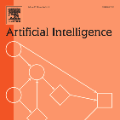Given that Artificial Intelligence (AI) increasingly permeates our lives, it is critical that we systematically align AI objectives with the goals and values of humans. The human-AI alignment problem stems from the impracticality of explicitly specifying the rewards that AI models should receive for all the actions they could take in all relevant states of the world. One possible solution, then, is to leverage the capabilities of AI models to learn those rewards implicitly from a rich source of data describing human values in a wide range of contexts. The democratic policy-making process produces just such data by developing specific rules, flexible standards, interpretable guidelines, and generalizable precedents that synthesize citizens' preferences over potential actions taken in many states of the world. Therefore, computationally encoding public policies to make them legible to AI systems should be an important part of a socio-technical approach to the broader human-AI alignment puzzle. This Essay outlines research on AI that learn structures in policy data that can be leveraged for downstream tasks. As a demonstration of the ability of AI to comprehend policy, we provide a case study of an AI system that predicts the relevance of proposed legislation to any given publicly traded company and its likely effect on that company. We believe this represents the "comprehension" phase of AI and policy, but leveraging policy as a key source of human values to align AI requires "understanding" policy. Solving the alignment problem is crucial to ensuring that AI is beneficial both individually (to the person or group deploying the AI) and socially. As AI systems are given increasing responsibility in high-stakes contexts, integrating democratically-determined policy into those systems could align their behavior with human goals in a way that is responsive to a constantly evolving society.
翻译:鉴于人工智能(AI)日益渗透到我们的生活之中,至关重要的是,我们应系统地将人工智能(AI)的目标与人类的目标和价值观统一起来。人类-人工智能(AI)的匹配问题源于明确具体说明AI模型在世界上所有相关国家可以采取的所有行动应得到的奖励;因此,一个可能的解决办法是利用AI模型的能力,从描述人类价值的丰富数据来源中隐含地学习这些回报。民主决策过程通过制定具体规则、灵活标准、可解释的指导方针和可推广的先例,将公民的偏好与世界许多州采取的潜在行动结合起来,从而将公民的偏好与社会行为相结合,而人类-人工智能(AI)的匹配问题源于民主的民主决策过程。因此,通过计算对公共政策进行编码,使这些模型与AI系统具有可理解性(AI)的所有行动都具有可理解性,因此,使公共政策与AI系统之间具有可理解性的关系。我们坚信,“使人类-AI政策得以持续地整合,从而实现核心的政策。”




